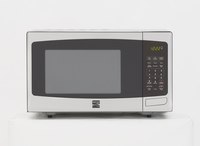
Photo from wikipedia
Abstract The properties of liquids under geometrical confinement are affected by a subtle counterbalance between the genuine confinement effect and surface conditions. Therefore, depending on the interactions of the guest… Click to show full abstract
Abstract The properties of liquids under geometrical confinement are affected by a subtle counterbalance between the genuine confinement effect and surface conditions. Therefore, depending on the interactions of the guest molecules with the solid surface, the effect caused by increasing geometrical constraints might be diversified. In this work, using Dielectric Spectroscopy (DS) and Differential Scanning Calorimetry (DSC), we aim to examine the effect of surface modification on the glassy dynamics and crystallization tendency of van der Waals liquid - dimethyl phthalate - embedded within cylindrical nanopores. The inner surface of the pore walls was modified by Atomic Layer Deposition (ALD) using two oxide coatings of much different hydrophilicity, namely, alumina oxide (Al2O3) and hafnium oxide (HfO2). The analysis of experimental data revealed that the changes in the surface conditions produced by both types of ALD coatings do not affect significantly the average time of the α-relaxation and the values of the glass transition temperatures for the interfacial and core layers as compared to native nanopores. However, the distribution of the α-relaxation time clearly broadens in the presence of more hydrophobic HfO2 coating. Finally, we also show that the changes in the hydrophilic-hydrophobic nature of the pores can be used to control the crystallization tendency of the nano-confined liquid. We found that with increasing the hydrophobic character of the surface crystallization rates increase while the values of the Avrami parameter decrease.
Journal Title: Journal of Molecular Liquids
Year Published: 2020
Link to full text (if available)
Share on Social Media: Sign Up to like & get
recommendations!